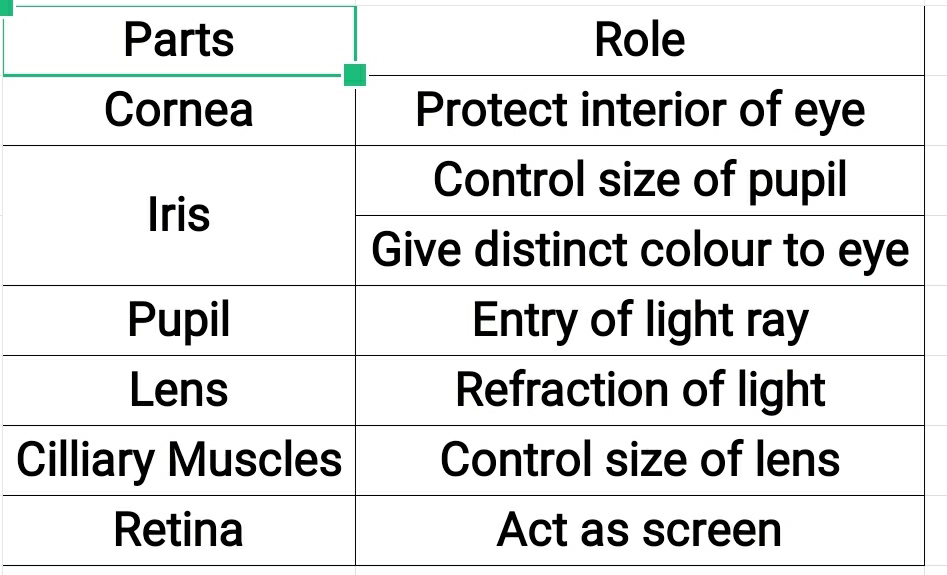Materials: Metals and Non-metals Class 8 Science Chapter 4
Materials: Metals and Non-metals
* Lustre-
Lustre is physical property of substance by
which it looks shiny.
* Malleability-
Malleability is property of metal, by which
they can be beaten into thin sheets.
* Ductility-
Property of metal, by which they can be
drawn into wires, is called ductility.
* Good conductor of heat/electricity
-The materials through which heat/electricity
can pass, is called good conductor of
heat/electricity.
-Example- Iron.
* Poor conductor of heat/electricity
-The materials through which heat/electricity
cannot pass, is called poor conductor of
heat/electricity.
- Example- Plastic
* Sonorous-
Metals are sonorous since they produce
ringing sound.
* Physical properties of metals and Non-
metals
- Metals are lustrous. Non-metals are
non-lustrous.
- Metals are hard. Non-metals are soft.
- Metals are solid. Non-metals are liquid or
gas.
- Metals are malleable. Non-metals are
non-malleable.
- Metals are ductile. Non-metals are
non-ductile.
- Metals are good conductor of heat and
electricity. Non-metals are poor conductor of
heat and electricity.
- Metals are sonorous. Non-metals are
non-sonorous.
* Chemical properties of metals and non-metals:
- Metal + Oxygen ----> Metallic oxide
Non-metal + Oxygen ----> Non-metallic oxide
- Generally Metallic oxides are basic in
nature.
Generally non-metallic oxides are acidic in
nature.
- Metal + Water ----> Metallic hydroxide
Non-metal + Water ----> Non-metallic
hydroxide
- Metal + Acid ----> Salt + Hydrogen
Generally non-metals do not react with acids.
- Metal + Base ----> Salt + Hydrogen
Non-metal + Base ----> Complex reaction
- More reactive metal can displace less
reactive metal from its salt.
No such thing happens in non-metals
* Rusting of iron
Iron + Water(moisture) + Oxygen ----> Iron
Oxide(Rust)
* Corrosion of Copper
Copper + Carbon dioxide + Water + Oxygen ----> Copper Hydroxide + Copper Carbonate
(Green)
* Sodium and Potassium are stored in
kerosene. Because
- Sodium and potassium react vigorously
with air and water.
- Sodium + Air or water ----> Reaction
Potassium + Air or water----> Reaction
* Phosphorus is stored in water. Because it
catches fire if exposed to air.
Phosphorus + Air ----> Catch fire.
* Reactivity series among zinc, copper and
iron:
Zinc > Iron > Copper
* Displacement reaction-
The reaction where more reactive metal
displaces less reactive metal from its salt, is
called displacement reaction.
Example-
Copper sulphate + Zinc ----> Zinc sulphate + Copper
* Uses of metals-
metalsare used in making machinery, automobiles, aeroplanes, trains,satellites, industrial gadgets, cooking,utensils, water boilers, etc.
* Uses of non-metals-
- Non-metal inhaled during breathing - Oxygen
- Non-metals used in fertilizer- Nitrogen, Phosphorus
- Non-metal used in water purification- Chlorine
- Non-metal used in wound as antiseptic - Iodine
* Lustre-
Lustre is physical property of substance by
which it looks shiny.
* Malleability-
Malleability is property of metal, by which
they can be beaten into thin sheets.
* Ductility-
Property of metal, by which they can be
drawn into wires, is called ductility.
* Good conductor of heat/electricity
-The materials through which heat/electricity
can pass, is called good conductor of
heat/electricity.
-Example- Iron.
* Poor conductor of heat/electricity
-The materials through which heat/electricity
cannot pass, is called poor conductor of
heat/electricity.
- Example- Plastic
* Sonorous-
Metals are sonorous since they produce
ringing sound.
* Physical properties of metals and Non-
metals
- Metals are lustrous. Non-metals are
non-lustrous.
- Metals are hard. Non-metals are soft.
- Metals are solid. Non-metals are liquid or
gas.
- Metals are malleable. Non-metals are
non-malleable.
- Metals are ductile. Non-metals are
non-ductile.
- Metals are good conductor of heat and
electricity. Non-metals are poor conductor of
heat and electricity.
- Metals are sonorous. Non-metals are
non-sonorous.
* Chemical properties of metals and non-metals:
- Metal + Oxygen ----> Metallic oxide
Non-metal + Oxygen ----> Non-metallic oxide
- Generally Metallic oxides are basic in
nature.
Generally non-metallic oxides are acidic in
nature.
- Metal + Water ----> Metallic hydroxide
Non-metal + Water ----> Non-metallic
hydroxide
- Metal + Acid ----> Salt + Hydrogen
Generally non-metals do not react with acids.
- Metal + Base ----> Salt + Hydrogen
Non-metal + Base ----> Complex reaction
- More reactive metal can displace less
reactive metal from its salt.
No such thing happens in non-metals
* Rusting of iron
Iron + Water(moisture) + Oxygen ----> Iron
Oxide(Rust)
* Corrosion of Copper
Copper + Carbon dioxide + Water + Oxygen ----> Copper Hydroxide + Copper Carbonate
(Green)
* Sodium and Potassium are stored in
kerosene. Because
- Sodium and potassium react vigorously
with air and water.
- Sodium + Air or water ----> Reaction
Potassium + Air or water----> Reaction
* Phosphorus is stored in water. Because it
catches fire if exposed to air.
Phosphorus + Air ----> Catch fire.
* Reactivity series among zinc, copper and
iron:
Zinc > Iron > Copper
* Displacement reaction-
The reaction where more reactive metal
displaces less reactive metal from its salt, is
called displacement reaction.
Example-
Copper sulphate + Zinc ----> Zinc sulphate + Copper
* Uses of metals-
metalsare used in making machinery, automobiles, aeroplanes, trains,satellites, industrial gadgets, cooking,utensils, water boilers, etc.
* Uses of non-metals-
- Non-metal inhaled during breathing - Oxygen
- Non-metals used in fertilizer- Nitrogen, Phosphorus
- Non-metal used in water purification- Chlorine
- Non-metal used in wound as antiseptic - Iodine

nice
ReplyDeleteMetals and Nonmetals are different types of materials present around us. Elements can be divided into metals and nonmetals and it is important to know whether a particular element is a metal or nonmetal. Metals are good conductors of heat and electricity, while nonmetals. The elements that border the stair-stepped line are classified as metalloids. The metalloids or semimetals, have properties that are somewhat of a cross between metals and nonmetals. All the details you shared are very beneficial. Students can also prep through online applications and websites. Thanks for this beneficial article.
ReplyDeleteThanks a lot for your valuable information. Keep us motivating sir.
Delete